ICGOO在线商城 > 分立半导体产品 > 晶体管 - FET,MOSFET - 单 > TPCF8104(TE85L,F,M
- 型号: TPCF8104(TE85L,F,M
- 制造商: Toshiba America Electronic Components, Inc.
- 库位|库存: xxxx|xxxx
- 要求:
| 数量阶梯 | 香港交货 | 国内含税 |
| +xxxx | $xxxx | ¥xxxx |
查看当月历史价格
查看今年历史价格
TPCF8104(TE85L,F,M产品简介:
ICGOO电子元器件商城为您提供TPCF8104(TE85L,F,M由Toshiba America Electronic Components, Inc.设计生产,在icgoo商城现货销售,并且可以通过原厂、代理商等渠道进行代购。 TPCF8104(TE85L,F,M价格参考。Toshiba America Electronic Components, Inc.TPCF8104(TE85L,F,M封装/规格:晶体管 - FET,MOSFET - 单, 表面贴装 P 沟道 30V 6A(Ta) 700mW(Ta) VS-8 (2.9x1.5)。您可以下载TPCF8104(TE85L,F,M参考资料、Datasheet数据手册功能说明书,资料中有TPCF8104(TE85L,F,M 详细功能的应用电路图电压和使用方法及教程。
TPCF8104(TE85L, F, M)是东芝半导体和存储公司生产的一款单通道MOSFET(金属氧化物场效应晶体管)。这款MOSFET属于N沟道增强型器件,具有低导通电阻、快速开关速度和高耐压等特点。以下是其主要应用场景: 1. 电源管理 TPCF8104常用于各种电源管理系统中,如开关电源(SMPS)、DC-DC转换器等。其低导通电阻有助于减少功率损耗,提高电源效率。在这些应用中,MOSFET作为开关元件,能够高效地控制电流的通断,确保电源系统的稳定性和可靠性。 2. 电机驱动 在小型电机驱动电路中,TPCF8104可以作为驱动元件,用于控制电机的启动、停止和调速。由于其快速的开关特性,能够在高频下工作,适用于无刷直流电机(BLDC)、步进电机等场合。此外,其低导通电阻有助于降低电机运行时的发热,延长电机寿命。 3. 电池管理系统(BMS) TPCF8104可用于电池管理系统的充放电控制电路中。它能够精确控制电池的充电和放电过程,防止过充、过放等问题,保护电池安全。其低导通电阻也有助于减少电池在充放电过程中产生的热量,提升系统的整体效率。 4. 负载开关 在需要频繁切换负载的应用中,TPCF8104可以用作负载开关。例如,在消费电子设备中,MOSFET可以在设备待机或关机时切断负载电流,从而节省能源。其快速的开关速度使得它能够在毫秒级时间内完成负载的切换,响应迅速且可靠。 5. 信号隔离与保护 TPCF8104还可以用于信号隔离和保护电路中,尤其是在高压环境下。通过使用MOSFET作为隔离元件,可以有效防止高压对低压电路的影响,确保系统的安全性。此外,MOSFET的高耐压特性使其能够在恶劣的工作环境中稳定工作。 总之,TPCF8104凭借其优异的电气性能和可靠性,广泛应用于电源管理、电机驱动、电池管理、负载开关以及信号隔离等多个领域,尤其适合对效率和可靠性要求较高的应用场景。
| 参数 | 数值 |
| 产品目录 | |
| 描述 | MOSFET P-CH 30V 6A VS-8 |
| 产品分类 | FET - 单 |
| FET功能 | 逻辑电平门 |
| FET类型 | MOSFET P 通道,金属氧化物 |
| 品牌 | Toshiba Semiconductor and Storage |
| 数据手册 | |
| 产品图片 | |
| 产品型号 | TPCF8104(TE85L,F,M |
| rohs | 无铅 / 符合限制有害物质指令(RoHS)规范要求 |
| 产品系列 | - |
| 不同Id时的Vgs(th)(最大值) | 2V @ 1mA |
| 不同Vds时的输入电容(Ciss) | 1760pF @ 10V |
| 不同Vgs时的栅极电荷(Qg) | 34nC @ 10V |
| 不同 Id、Vgs时的 RdsOn(最大值) | 28 毫欧 @ 3A,10V |
| 产品目录绘图 |
|
| 产品目录页面 | |
| 供应商器件封装 | VS-8(2.9x1.9) |
| 其它名称 | TPCF8104FCT |
| 功率-最大值 | - |
| 包装 | 剪切带 (CT) |
| 安装类型 | 表面贴装 |
| 封装/外壳 | 8-SMD,扁平引线 |
| 标准包装 | 1 |
| 漏源极电压(Vdss) | 30V |
| 电流-连续漏极(Id)(25°C时) | 6A (Ta) |

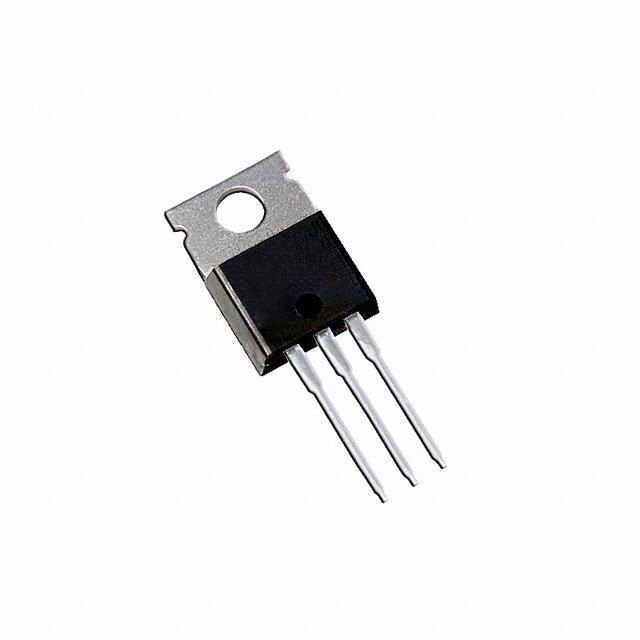
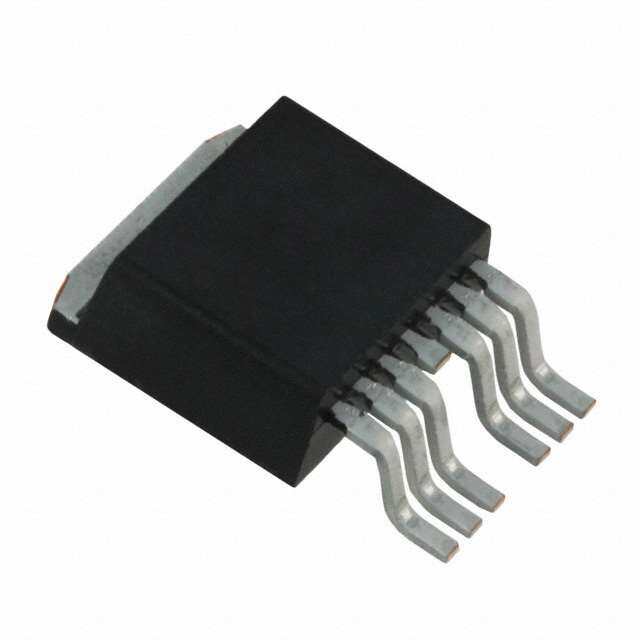



- 商务部:美国ITC正式对集成电路等产品启动337调查
- 曝三星4nm工艺存在良率问题 高通将骁龙8 Gen1或转产台积电
- 太阳诱电将投资9.5亿元在常州建新厂生产MLCC 预计2023年完工
- 英特尔发布欧洲新工厂建设计划 深化IDM 2.0 战略
- 台积电先进制程称霸业界 有大客户加持明年业绩稳了
- 达到5530亿美元!SIA预计今年全球半导体销售额将创下新高
- 英特尔拟将自动驾驶子公司Mobileye上市 估值或超500亿美元
- 三星加码芯片和SET,合并消费电子和移动部门,撤换高东真等 CEO
- 三星电子宣布重大人事变动 还合并消费电子和移动部门
- 海关总署:前11个月进口集成电路产品价值2.52万亿元 增长14.8%


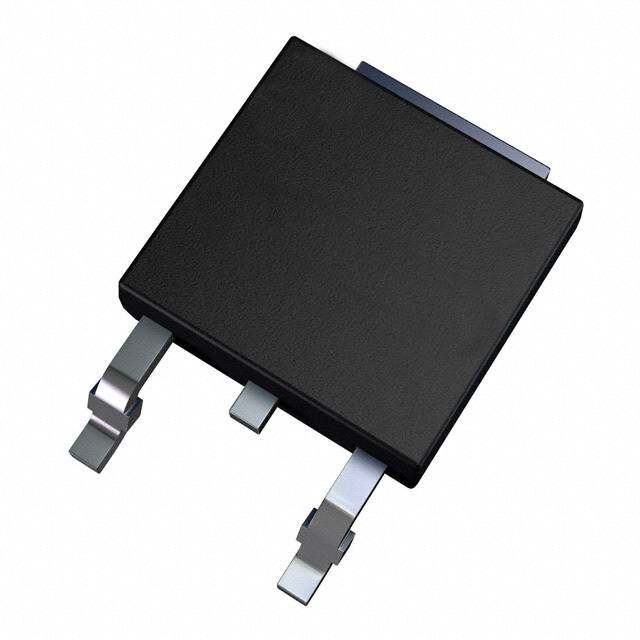
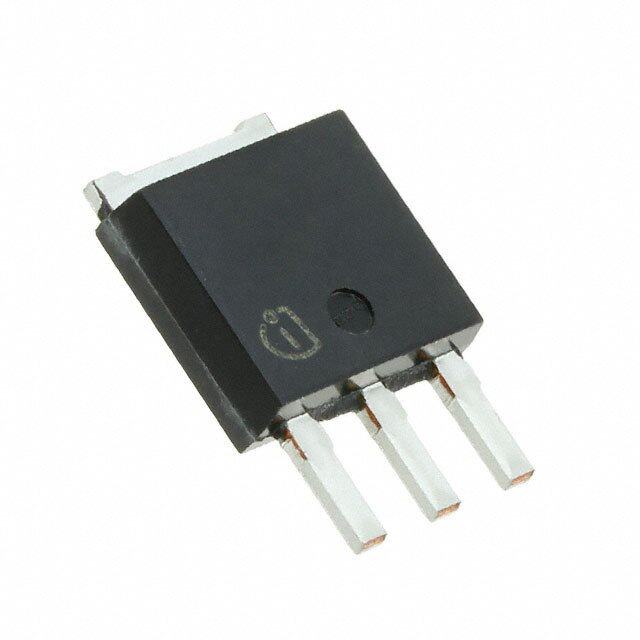

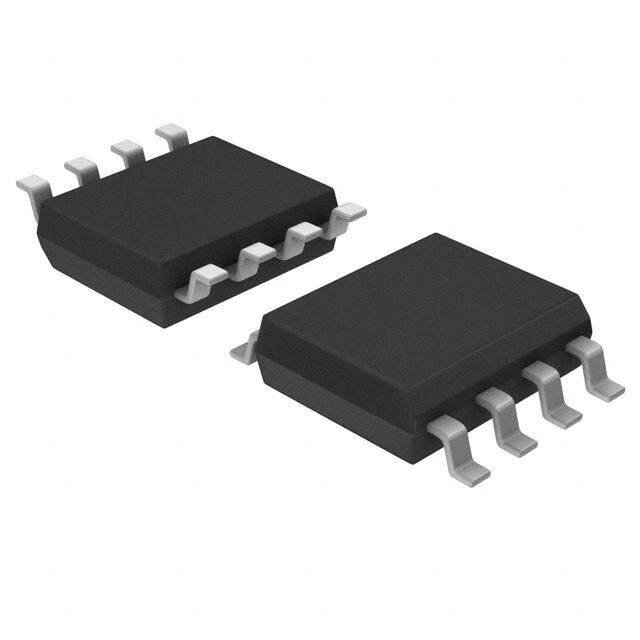
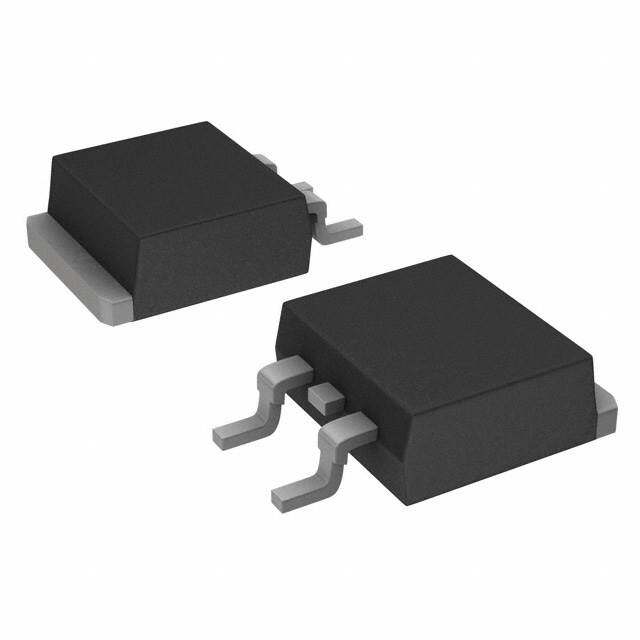
PDF Datasheet 数据手册内容提取
TPCF8104 TOSHIBA Field Effect Transistor Silicon P Channel MOS Type (U-MOSⅣ) TPCF8104 Notebook PC Applications Unit: mm Portable Equipment Applications • Low drain-source ON resistance: RDS (ON) = 21 mΩ (typ.) • High forward transfer admittance: |Yfs| = 9.6 S (typ.) • Low leakage current: IDSS = −10 μA (max) (VDS = −30 V) • Enhancement mode: Vth = −0.8 to −2.0 V (VDS = −10 V, ID = −1mA) Absolute Maximum Ratings (Ta = 25°C) Characteristics Symbol Rating Unit JEDEC ― Drain-source voltage VDSS −30 V JEITA ― Drain-gate voltage (RGS = 20 kΩ) VDGR −30 V Gate-source voltage VGSS ±20 V TOSHIBA 2-3U1A DC (Note 1) ID −6 Weight: 0.011 g (typ.) Drain current A Pulse (Note 1) IDP −24 Drain power dissipation (t = 5 s) (Note 2a) PD 2.5 W Circuit Configuration Drain power dissipation (t = 5 s) (Note 2b) PD 0.7 W 8 7 6 5 Single pulse avalanche energy (Note 3) EAS 5.8 mJ Avalanche current IAR −3 A Repetitive avalanche energy (Note 4) EAR 0.25 mJ Channel temperature Tch 150 °C Storage temperature range Tstg −55 to 150 °C 1 2 3 4 Note: (Note 1), (Note 2), (Note 3) and (Note 4): See the next page. Using continuously under heavy loads (e.g. the application of high temperature/current/voltage and the significant change in temperature, etc.) may cause this product to decrease in the reliability significantly even if the operating conditions (i.e. operating temperature/current/voltage, etc.) are within the absolute maximum ratings. Please design the appropriate reliability upon reviewing the Toshiba Semiconductor Reliability Handbook (“Handling Precautions”/Derating Concept and Methods) and individual reliability data (i.e. reliability test report and estimated failure rate, etc). This transistor is an electrostatic-sensitive device. Please handle with caution. 1 2009-09-29
TPCF8104 Thermal Characteristics Characteristics Symbol Max Unit Thermal resistance, channel to ambient (t = 5 s) (Note 2a) Rth (ch-a) 50.0 °C/W Thermal resistance, channel to ambient (t = 5 s) (Note 2b) Rth (ch-a) 178.6 °C/W Marking (Note 5) Lot code (month) Lot No. Part No. F3D (or abbreviation code) Product-specific code Pin #1 Lot code Note 6 (year) Note 1: Ensure that the channel temperature does not exceed 150℃. Note 2: (a) Device mounted on a glass-epoxy board (a) (b) Device mounted on a glass-epoxy board (b) FR-4 FR-4 25.4 × 25.4 × 0.8 25.4 × 25.4 × 0.8 (Unit: mm) (Unit: mm) (a) (b) Note 3: VDD = −24 V, Tch = 25°C (initial), L = 0.5 mH, RG = 25 Ω, IAR = −3.0 A Note 4: Repetitive rating: pulse width limited by maximum channel temperature Note 5: ● on the lower left of the marking indicates Pin 1. Note 6: A dot marking identifies the indication of product Labels. Without a dot: [[Pb]]/INCLUDES > MCV With a dot: [[G]]/RoHS COMPATIBLE or [[G]]/RoHS [[Pb]] Please contact your TOSHIBA sales representative for details as to environmental matters such as the RoHS compatibility of Product. The RoHS is the Directive 2002/95/EC of the European Parliament and of the Council of 27 January 2003 on the restriction of the use of certain hazardous substances in electrical and electronic equipment. 2 2009-09-29
TPCF8104 Electrical Characteristics (Ta = 25°C) Characteristics Symbol Test Condition Min Typ. Max Unit Gate leakage current IGSS VGS = ±16 V, VDS = 0 V ⎯ ⎯ ±10 μA Drain cut-off current IDSS VDS = −30 V, VGS = 0 V ⎯ ⎯ −10 μA V (BR) DSS ID = −10 mA, VGS = 0 V −30 ⎯ ⎯ Drain-source breakdown voltage V V (BR) DSX ID = −10 mA, VGS = 20 V −15 ⎯ ⎯ Gate threshold voltage Vth VDS = −10 V, ID = −1mA −0.8 ⎯ −2.0 V VGS = −4.5 V, ID = −3.0 A ⎯ 29 38 Drain-source ON resistance RDS (ON) mΩ VGS = −10 V, ID = −3.0A ⎯ 21 28 Forward transfer admittance |Yfs| VDS = −10 V, ID = −3.0A 4.8 9.6 ⎯ S Input capacitance Ciss ⎯ 1760 ⎯ Reverse transfer capacitance Crss VDS = −10 V, VGS = 0 V, f = 1 MHz ⎯ 200 ⎯ pF Output capacitance Coss ⎯ 210 ⎯ Rise time tr 0 V ID = −3.0 A ⎯ 2.8 ⎯ VGS VOUT Turn-on time ton −10 V Ω ⎯ 12 ⎯ Switching time Ω 5 = ns 7 L Fall time tf 4. R ⎯ 22 ⎯ VDD∼− −15 V Turn-off time toff Duty<= 1%, tw = 10 μs ⎯ 90 ⎯ Total gate charge (gate-source plus gate-drain) Qg ⎯ 34 ⎯ VDD∼− −24 V, VGS = −10V, nC Gate-source charge1 Qgs1 ID = −6.0 A ⎯ 4.7 ⎯ Gate-drain (“miller”) charge Qgd ⎯ 7.2 ⎯ Source-Drain Ratings and Characteristics (Ta = 25°C) Characteristics Symbol Test Condition Min Typ. Max Unit Drain reverse current Pulse (Note 1) IDRP ⎯ ⎯ ⎯ −24 A Forward voltage (diode) VDSF IDR = −6.0 A, VGS = 0 V ⎯ ⎯ 1.2 V 3 2009-09-29
TPCF8104 ID – VDS ID – VDS -5 -10 -10 -2.7 Common source -3 Common source -2.8 Ta = 25°C Ta = 25°C -4.5 -3 Pulse test -3.5 -2.8 Pulse test -4 -2.6 -8 -4.5 (A) -3.5 -2.5 (A) -10 -2.7 -2.6 D -3 D -6 I I ent -2.4 ent -2.5 curr -2 curr -4 n n -2.4 Drai -2.3 Drai -2.3 -1 -2 -2.2 -2.2 VGS = -2.1V VGS = -2.1 V 0 0 0 -0.2 -0.4 -0.6 -0.8 -1.0 0 -1 -2 -3 -4 -5 Drain-source voltage VDS (V) Drain-source voltage VDS (V) ID – VGS VDS – VGS -10 -0.5 Common source Common source -8 VDS = -10 V (V) -0.4 TPau l=s e2 5te℃st A) Pulse test DS ( V urrent I D -86 e voltage --00..32 n c urc ID = -6 A Drai 4 100 Ta = −55°C Drain-so -0.1 -3 25 -1.5 0 0 0 -1 -2 -3 -4 -5 0 -2 -4 -6 -8 -10 Gate-source voltage VGS (V) Gate-source voltage VGS (V) ⎪Yfs⎪ – ID RDS (ON) – ID -100 1000 Common source common source (S) VDS = -10 V Ta = 25°C ansfer admittance |Y| fs -1-10 Pulse test 100 Ta = −55°C2 5 n-source ON resistance (m) RΩDS (ON) 10100 Pulse test VGS- 4=. 5-1 0 V ard tr Drai w or F -0.1 1 -0.1 -1 -10 -100 -0.1 -1 -10 -100 Drain current ID (A) Drain current ID (A) 4 2009-09-29
TPCF8104 RDS (ON) – Ta IDR – VDS 50 -100 Common source ID = -6A Common source e 40 Pulse test -3A (A) TPau l=s e2 5te°sCt N resistanc(m) Ω 30 VGS = -4.5 V -3A ID =-−1 .65AA ent I DR -10 -4.5 n-source O RDS (ON) 20 -1.5A everse curr -10 -3 Drai 10 VGS = -10 V Drain r -2 -1 VGS = 0 V 0 -1 −80 −40 0 40 80 120 160 0 0.4 0.8 1.2 1.6 2 Ambient temperature Ta (°C) Drain-source voltage VDS (V) Capacitance – VDS Vth – Ta 10000 -4 Common source Ciss V) VDS = -10 V pF) 1000 V (th -3 IPDu l=s e-1 t emsAt C ( Coss ge Capacitance 11000 CVGomSm =o 0n Vs ource Crss ate threshold volta --12 f = 1 MHz G Ta = 25°C 1 0 -0.1 -1 -10 -100 −80 −40 0 40 80 120 160 Drain-source voltage VDS (V) Ambient temperature Ta (°C) Dynamic input/output PD – Ta characteristics 3 (1) Device mounted on a glass-epoxy board (a) (Note 2a) W) 2.5 (1) t = 5 s (2) Device mounted on a V) -40 -16 V) (D glass-epoxy board (b) (Note 2b) (S (S P 2 VD -30 -12 VG Drain power dissipation 01..155 (((212))) DtD =CC 5 s Drain-source voltage --1200 VDS VGS-6 CITPD-au1o l2m==Vs eD-m26 5tDo eA°n sC= ts -o2u4r cVe --84 Gate-source voltage 0 0 0 0 40 80 120 160 0 -10 -20 -30 -40 -50 Ambient temperature Ta (°C) Total gate charge Qg (nC) 5 2009-09-29
TPCF8104 rth – tw 1000 Device mounted on a glass-epoxy board (b) (Note 2b) 100 W) mal (°C/ Device mounted on a glass-epoxy board (a) (Note 2a) ent there r th 10 Transiedanc p m i 1 0.1 1 m 10 m 100 m 1 10 100 1000 Pulse width tw (s) Safe operating area −100 ID max (pulse)* A) 1 ms* ( −10 D I ent 10 ms* urr c ain −1 Dr *:Single pulse Ta = 25°C Curves must be derated linearly with increase in temperature VDSS max −0.1 −0.1 −1 −10 −100 Drain-source voltage VDS (V) 6 2009-09-29
TPCF8104 RESTRICTIONS ON PRODUCT USE • Toshiba Corporation, and its subsidiaries and affiliates (collectively “TOSHIBA”), reserve the right to make changes to the information in this document, and related hardware, software and systems (collectively “Product”) without notice. • This document and any information herein may not be reproduced without prior written permission from TOSHIBA. Even with TOSHIBA’s written permission, reproduction is permissible only if reproduction is without alteration/omission. • Though TOSHIBA works continually to improve Product’s quality and reliability, Product can malfunction or fail. Customers are responsible for complying with safety standards and for providing adequate designs and safeguards for their hardware, software and systems which minimize risk and avoid situations in which a malfunction or failure of Product could cause loss of human life, bodily injury or damage to property, including data loss or corruption. Before creating and producing designs and using, customers must also refer to and comply with (a) the latest versions of all relevant TOSHIBA information, including without limitation, this document, the specifications, the data sheets and application notes for Product and the precautions and conditions set forth in the “TOSHIBA Semiconductor Reliability Handbook” and (b) the instructions for the application that Product will be used with or for. Customers are solely responsible for all aspects of their own product design or applications, including but not limited to (a) determining the appropriateness of the use of this Product in such design or applications; (b) evaluating and determining the applicability of any information contained in this document, or in charts, diagrams, programs, algorithms, sample application circuits, or any other referenced documents; and (c) validating all operating parameters for such designs and applications. TOSHIBA ASSUMES NO LIABILITY FOR CUSTOMERS’ PRODUCT DESIGN OR APPLICATIONS. • Product is intended for use in general electronics applications (e.g., computers, personal equipment, office equipment, measuring equipment, industrial robots and home electronics appliances) or for specific applications as expressly stated in this document. Product is neither intended nor warranted for use in equipment or systems that require extraordinarily high levels of quality and/or reliability and/or a malfunction or failure of which may cause loss of human life, bodily injury, serious property damage or serious public impact (“Unintended Use”). Unintended Use includes, without limitation, equipment used in nuclear facilities, equipment used in the aerospace industry, medical equipment, equipment used for automobiles, trains, ships and other transportation, traffic signaling equipment, equipment used to control combustions or explosions, safety devices, elevators and escalators, devices related to electric power, and equipment used in finance-related fields. Do not use Product for Unintended Use unless specifically permitted in this document. • Do not disassemble, analyze, reverse-engineer, alter, modify, translate or copy Product, whether in whole or in part. • Product shall not be used for or incorporated into any products or systems whose manufacture, use, or sale is prohibited under any applicable laws or regulations. • The information contained herein is presented only as guidance for Product use. No responsibility is assumed by TOSHIBA for any infringement of patents or any other intellectual property rights of third parties that may result from the use of Product. No license to any intellectual property right is granted by this document, whether express or implied, by estoppel or otherwise. • ABSENT A WRITTEN SIGNED AGREEMENT, EXCEPT AS PROVIDED IN THE RELEVANT TERMS AND CONDITIONS OF SALE FOR PRODUCT, AND TO THE MAXIMUM EXTENT ALLOWABLE BY LAW, TOSHIBA (1) ASSUMES NO LIABILITY WHATSOEVER, INCLUDING WITHOUT LIMITATION, INDIRECT, CONSEQUENTIAL, SPECIAL, OR INCIDENTAL DAMAGES OR LOSS, INCLUDING WITHOUT LIMITATION, LOSS OF PROFITS, LOSS OF OPPORTUNITIES, BUSINESS INTERRUPTION AND LOSS OF DATA, AND (2) DISCLAIMS ANY AND ALL EXPRESS OR IMPLIED WARRANTIES AND CONDITIONS RELATED TO SALE, USE OF PRODUCT, OR INFORMATION, INCLUDING WARRANTIES OR CONDITIONS OF MERCHANTABILITY, FITNESS FOR A PARTICULAR PURPOSE, ACCURACY OF INFORMATION, OR NONINFRINGEMENT. • Do not use or otherwise make available Product or related software or technology for any military purposes, including without limitation, for the design, development, use, stockpiling or manufacturing of nuclear, chemical, or biological weapons or missile technology products (mass destruction weapons). Product and related software and technology may be controlled under the Japanese Foreign Exchange and Foreign Trade Law and the U.S. Export Administration Regulations. Export and re-export of Product or related software or technology are strictly prohibited except in compliance with all applicable export laws and regulations. • Please contact your TOSHIBA sales representative for details as to environmental matters such as the RoHS compatibility of Product. Please use Product in compliance with all applicable laws and regulations that regulate the inclusion or use of controlled substances, including without limitation, the EU RoHS Directive. TOSHIBA assumes no liability for damages or losses occurring as a result of noncompliance with applicable laws and regulations. 7 2009-09-29
 Datasheet下载
Datasheet下载.JPG)


